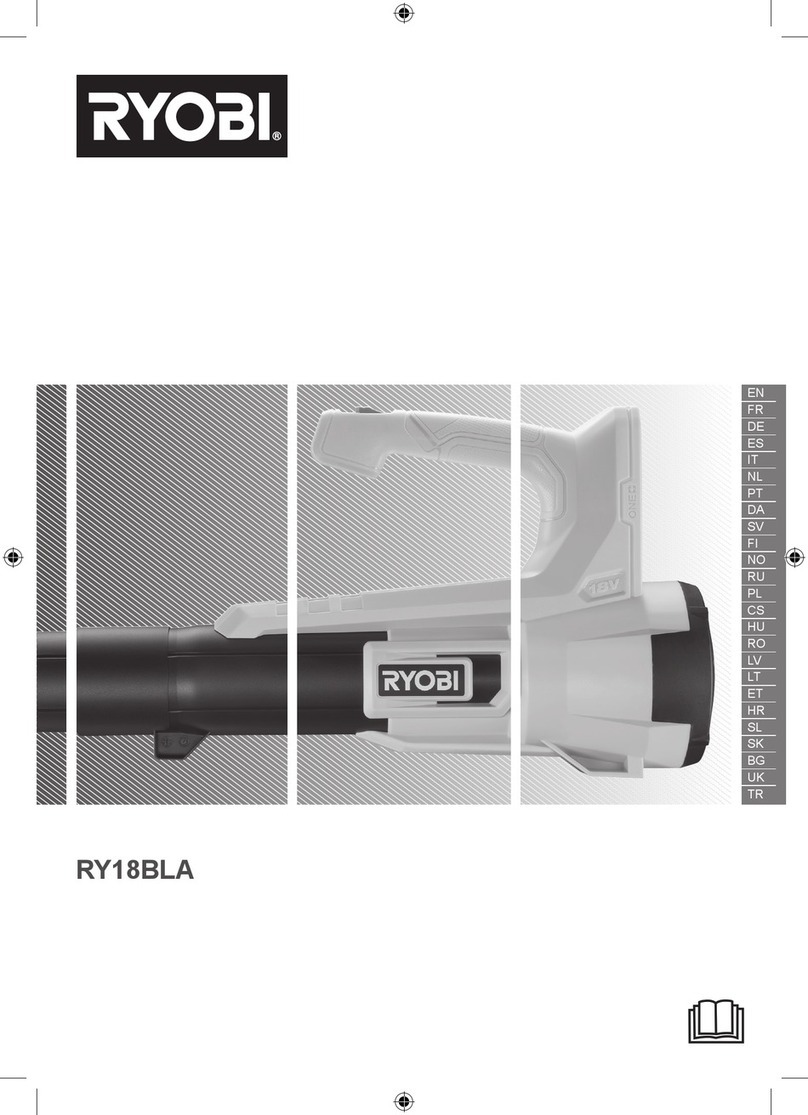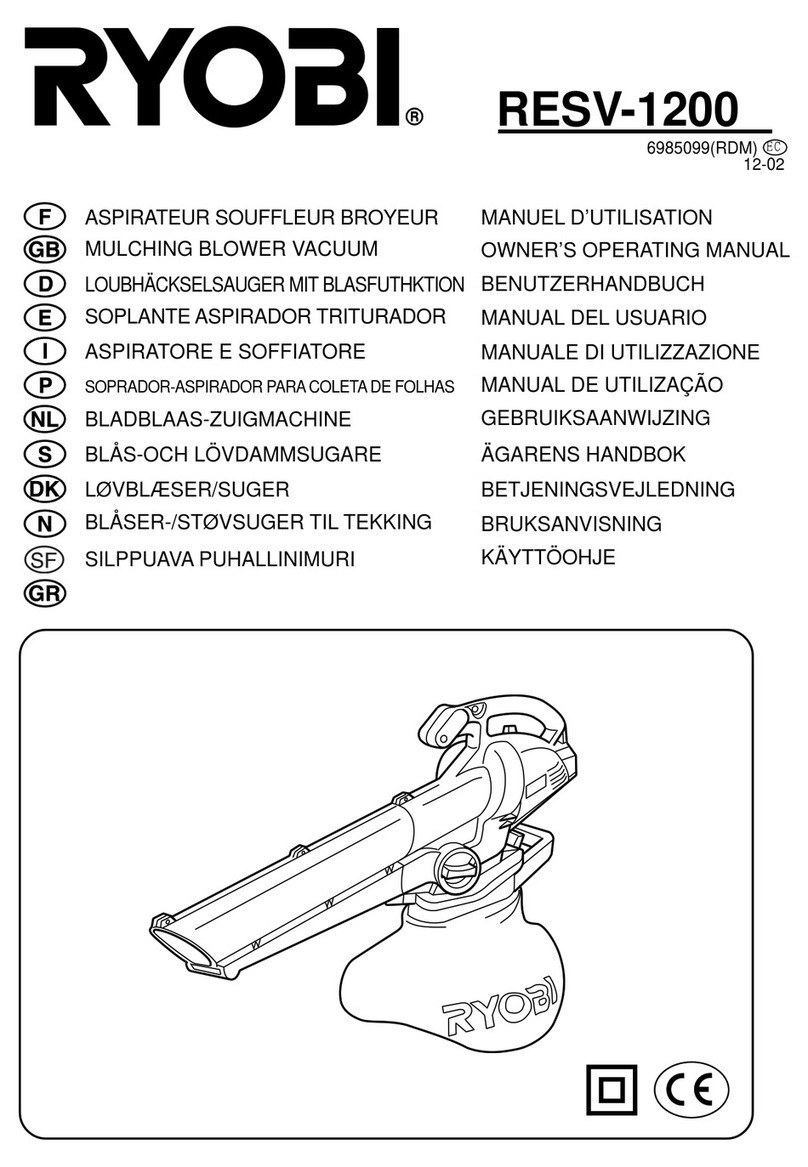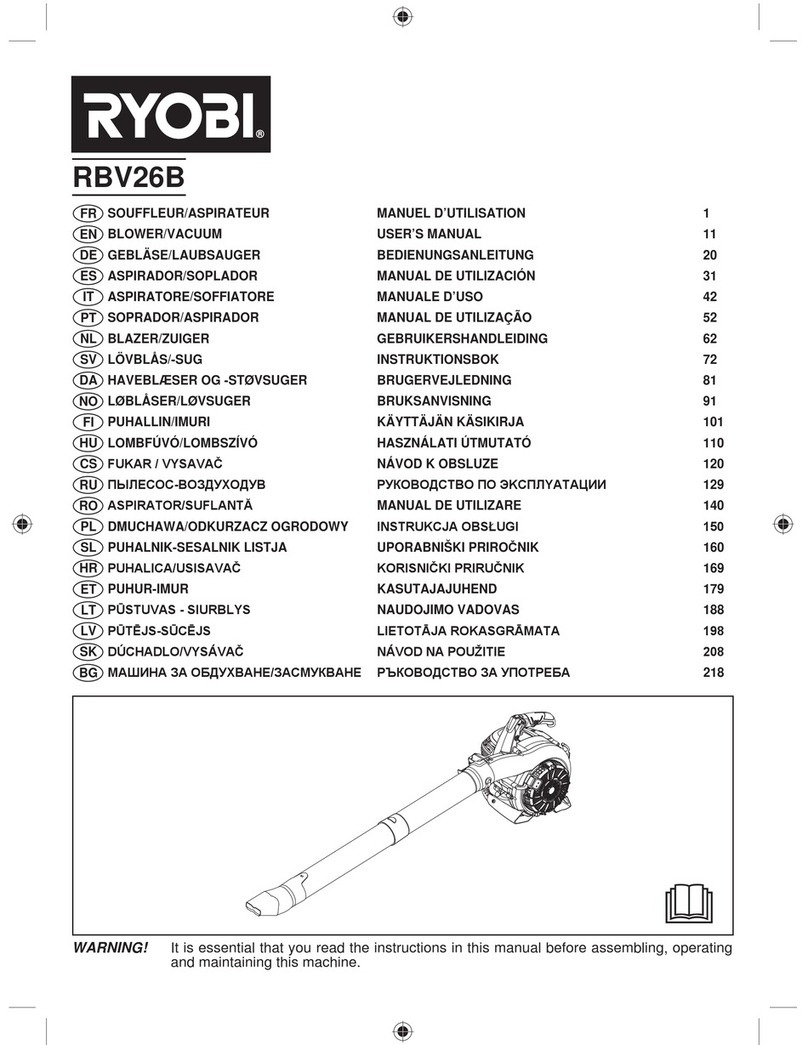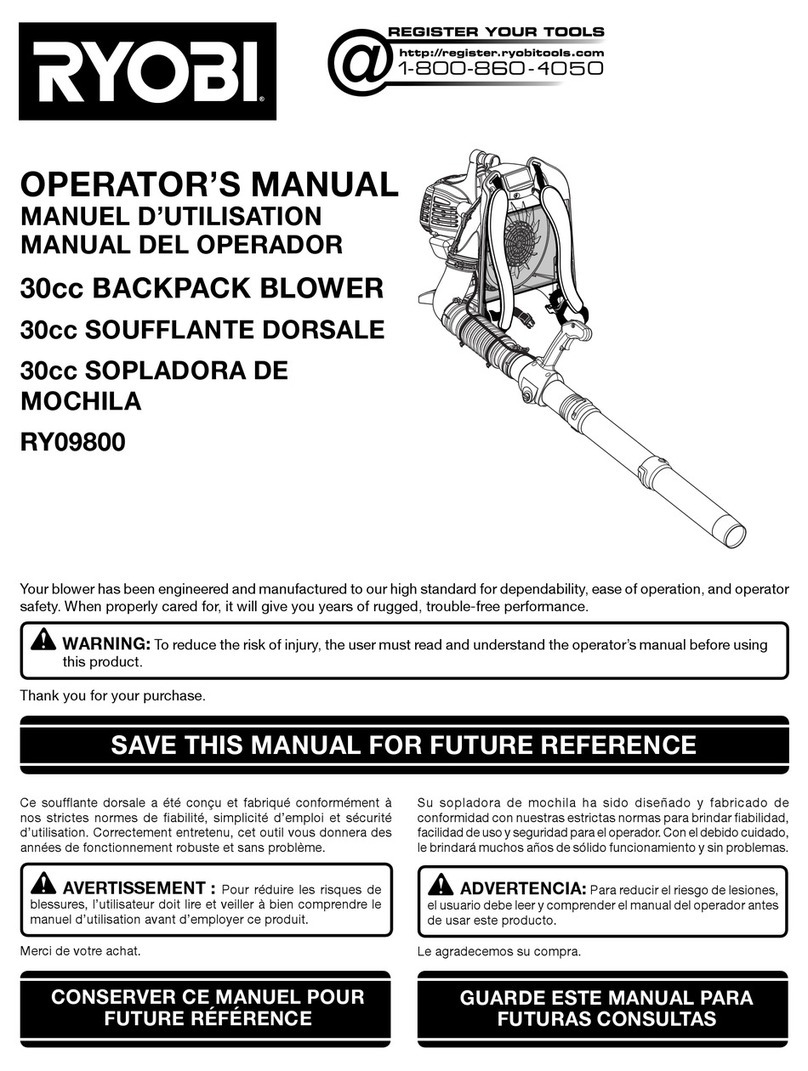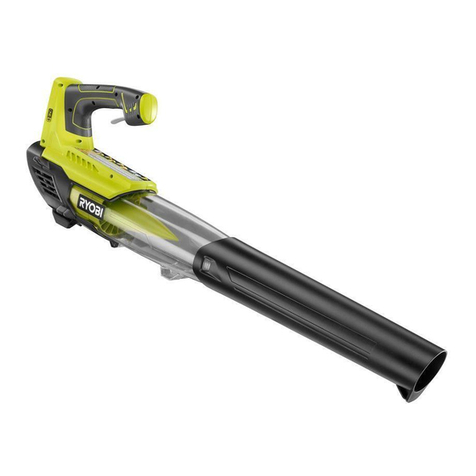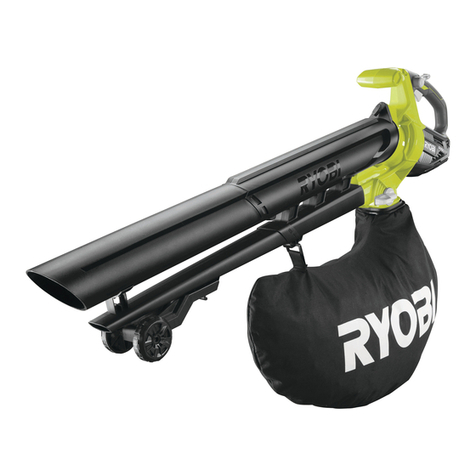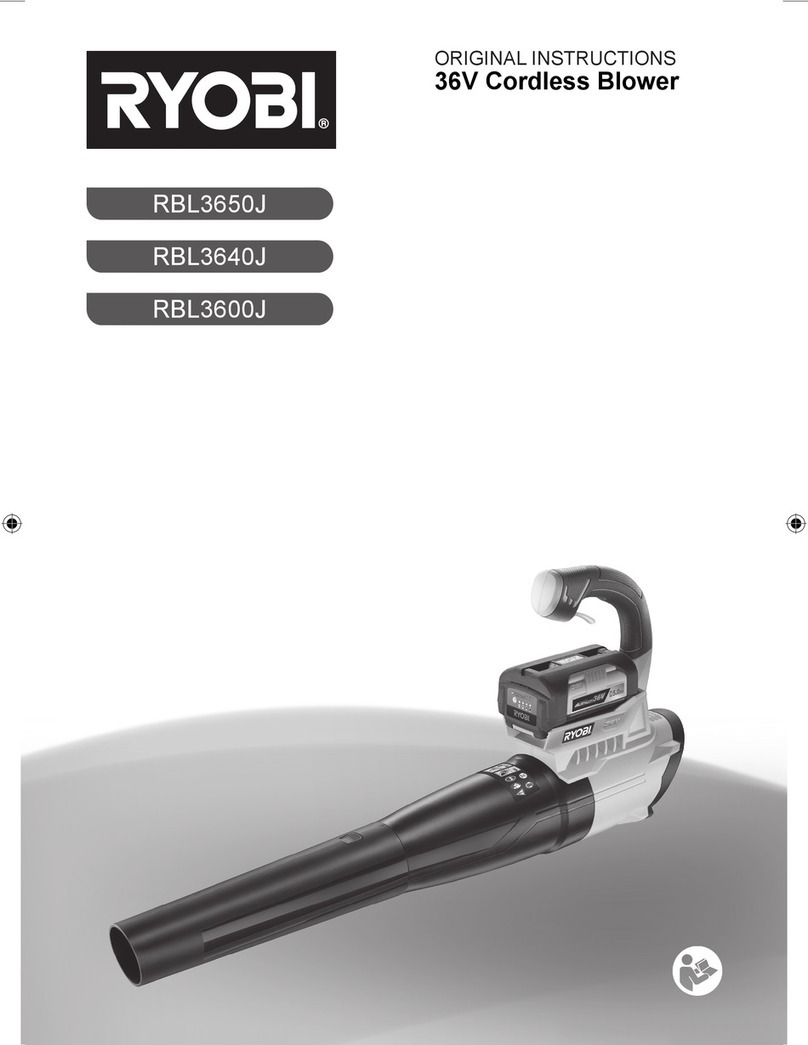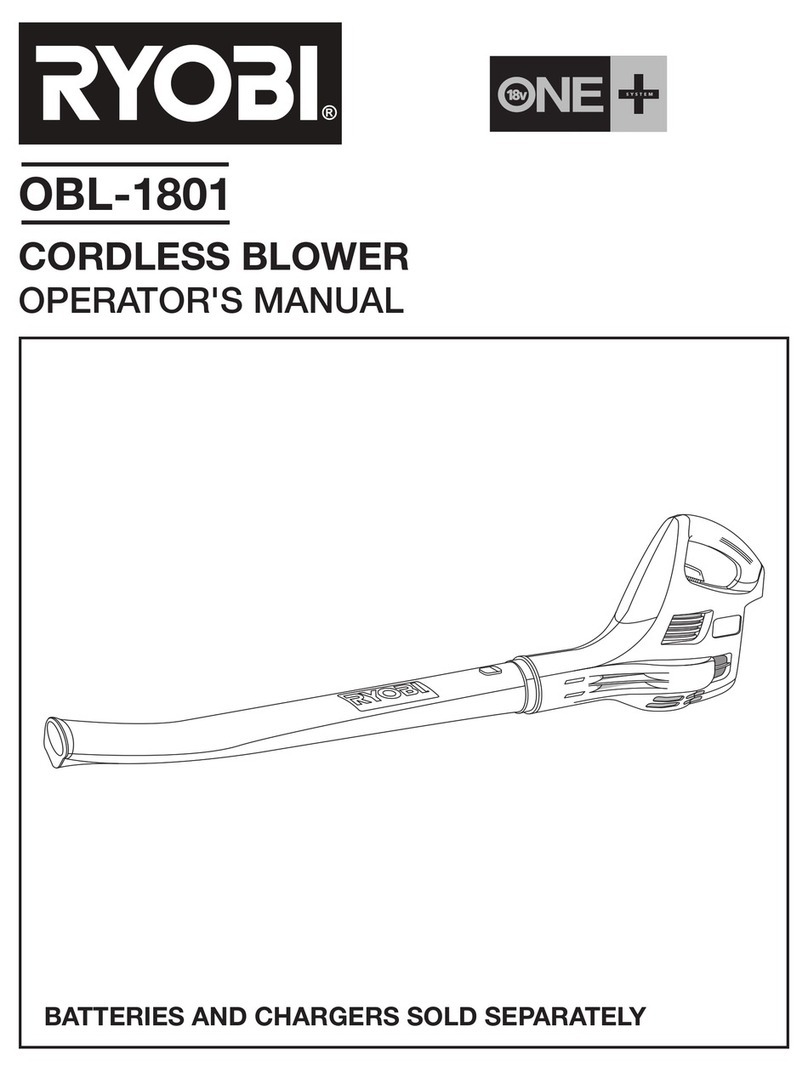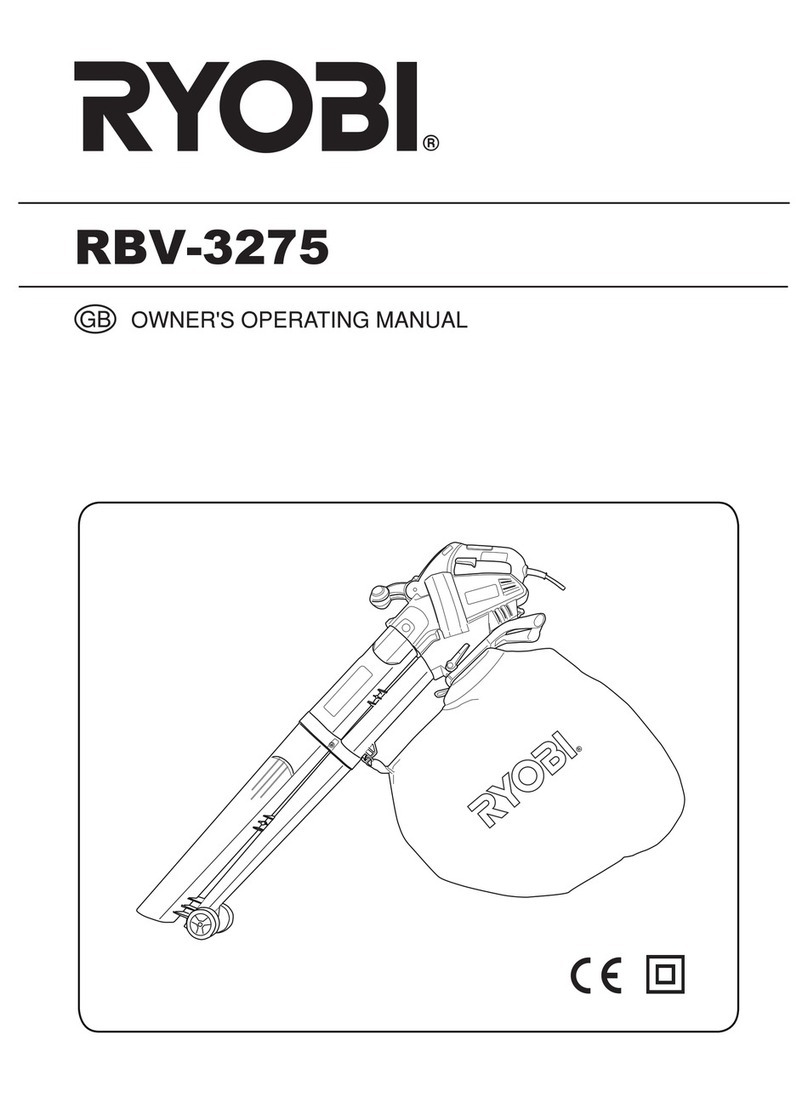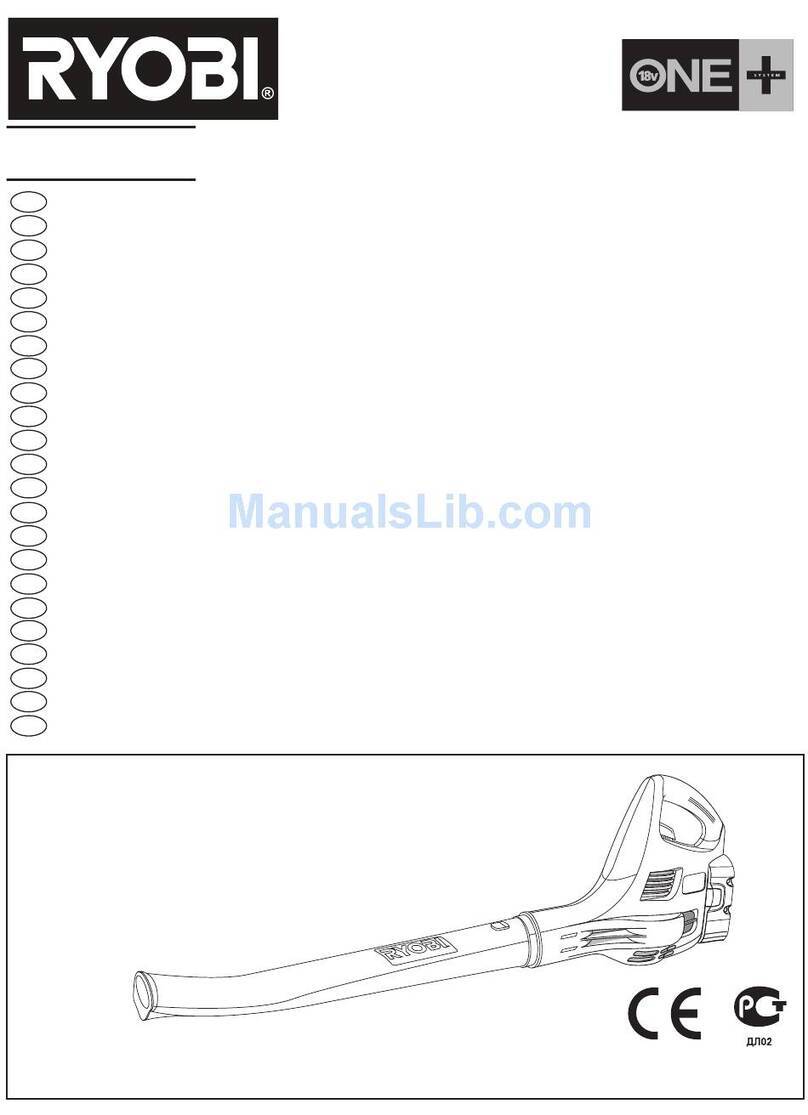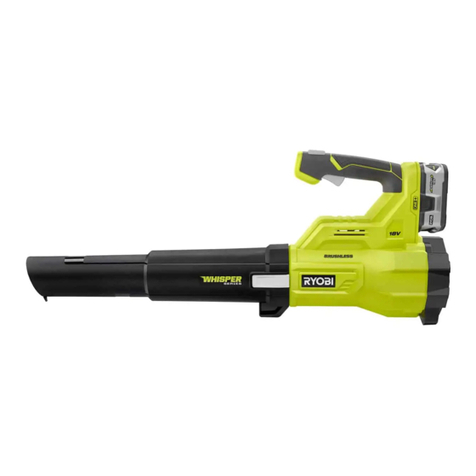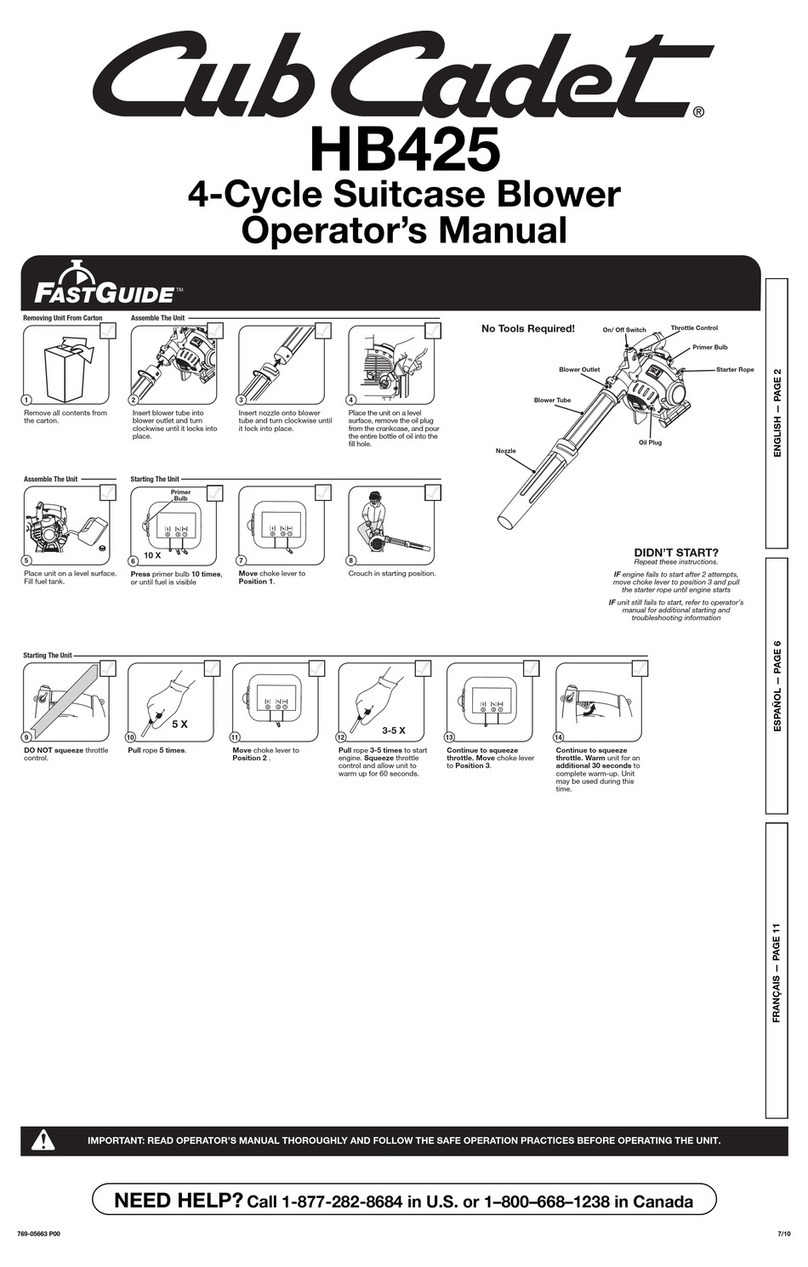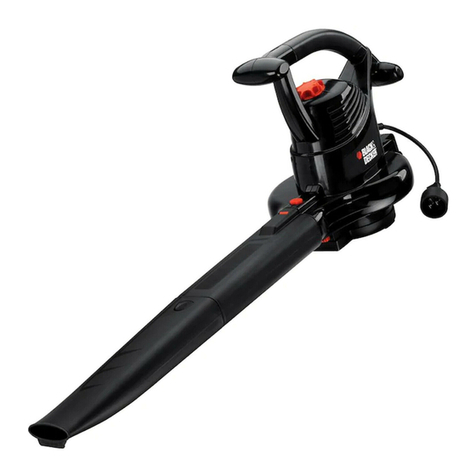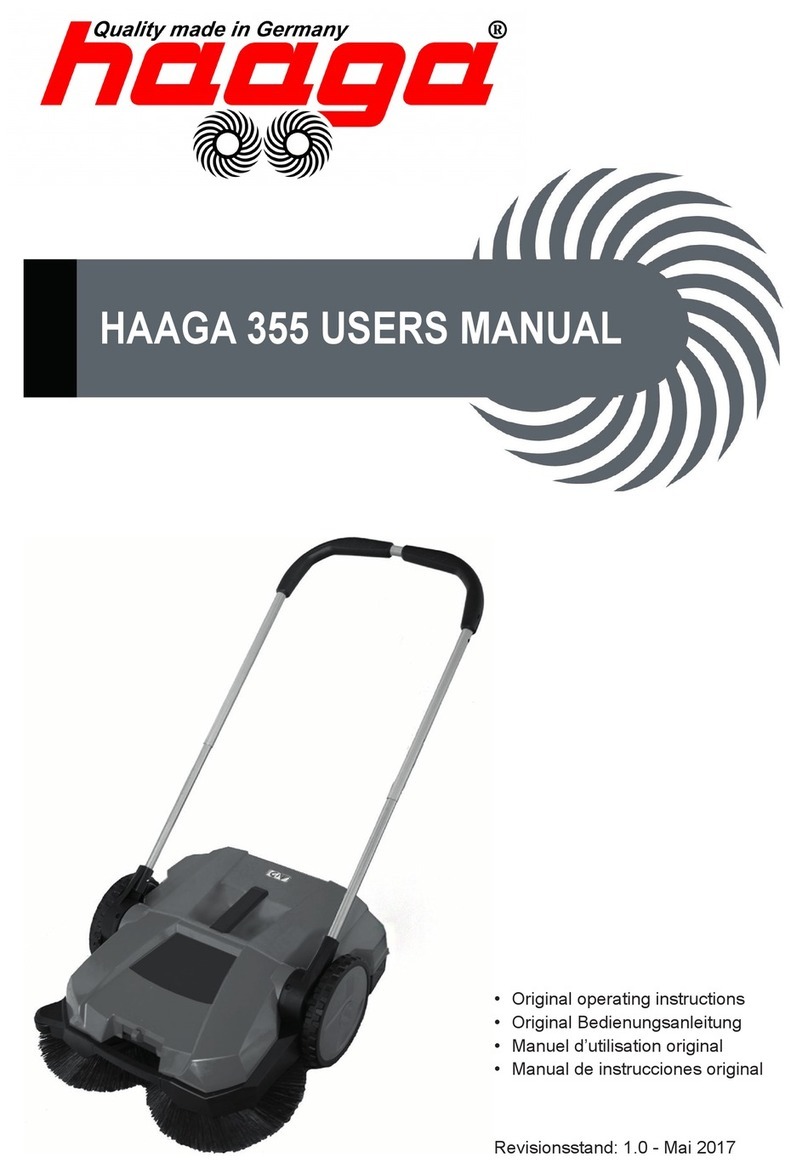
4 — English
IMPORTANT SAFETY INSTRUCTIONS
When battery pack is not in use, keep it away from
othermetal objects like: paper clips,coins, keys,nails,
screws, or other small metal objects that can make
a connection from one terminal to another. Shorting
the battery terminals together may cause sparks, burns,
or a fire.
Check for misalignment or binding of moving parts,
breakage of parts, and any other condition that may
affect the blower’s operation. If damaged, have the
blower serviced before using. Many accidents are
caused by poorly maintained blowers.
Keep the blower and its handle dry, clean and free
from oil and grease. Always use a clean cloth when
cleaning. Never use brake fluids, gasoline, petroleum-
based products, or any strong solvents to clean your
blower. Following this rule will reduce the risk of loss of
control and deterioration of the enclosure plastic.
Always wear eye protection with side shields marked
tocomply with ANSIZ87.1. Following this rule willreduce
the risk of eye injury when operating this equipment.
Protect your lungs. Wear a face or dust mask if the
operation is dusty. Following this rule will reduce the
risk of serious personal injury.
Protect your hearing. Wear hearing protection during
extended periods of operation. Following this rule will
reduce the risk of serious personal injury.
Battery blowers do not have to be plugged into an
electricaloutlet;therefore,theyarealwaysinoperating
condition. Be aware of possible hazards when not
using your battery powered blower or when changing
accessories. Following this rule will reduce the risk of
electric shock, fire, or serious personal injury.
Donotplacebatterypoweredblowersortheirbatteries
near fire or heat. This will reduce the risk of explosion
and possibly injury.
Do not crush, drop or damage battery pack. Do not
use a battery pack or charger that has been dropped
or received a sharp blow. A damaged battery is subject
to explosion. Properly dispose of a dropped or damaged
battery immediately.
Don’t expose blowers to rain or wet conditions. Water
entering a blower will increase the risk of electric shock.
Wearheavy long pants,longsleeves,boots,andgloves.
Avoid loose garments or jewelry that could get caught in
moving parts of the machine or its motor.
Do not operate the equipment while barefoot or when
wearing sandals or similar lightweight footwear. Wear
protective footwear that will protect your feet and improve
your footing on slippery surfaces.
Batteries can explode in the presence of a source
of ignition, such as a pilot light. To reduce the risk of
serious personal injury, never use any cordless product
in the presence of open flame. An exploded battery can
propel debris and chemicals. If exposed, flush with water
immediately.
Do not charge blower battery in a damp or wet
location. Following this rule will reduce the risk of electric
shock.
Keep firm footing and balance. Do not overreach.
Overreaching can result in loss of balance.
Check the work area before each use. Remove all
objects such as rocks, broken glass, nails, wire, or string
which can be thrown or becomeentangled in the machine.
Do not point the blower nozzle in the direction of
people or pets.
Never run the unit without the proper equipment at-
tached. Always ensure the blower tubes are installed.
When not in use, blower should be stored indoors in
a dry, locked up place—out of the reach of children.
Keep all bystanders, children, and pets at least 50 ft.
away.
Forbestresults,your blower battery should becharged
in a location where the temperature is more than 50°F
butless than 100°F. Do not storeoutsideor in vehicles.
Under extreme usage or temperature conditions,
battery leakage may occur. If liquid comes in contact
withyour skin, wash immediately with soap and water.
If liquid gets into your eyes, flush them with clean
water for at least 10 minutes, then seek immediate
medical attention. Following this rule will reduce the risk
of serious personal injury.
Do not incinerate this blower even if it is severely
damaged. The batteries can explode in a fire.
Blower service must be performed only by qualified
repair personnel. Service or maintenance performed by
unqualified personnel may result in a risk of injury.
Whenservicingablower,useonlyidenticalreplacement
parts. Follow instructions in the Maintenance section of
this manual. Use of unauthorized parts or failure to follow
Maintenance Instructions may create a risk of shock or
injury.
Never use blower near fires or hot ashes. Use near
fires or ashes can spread fires and result in serious injury
and/or property damage.
Never use blower to spread chemicals, fertilizers, or
anyothertoxicsubstances.Spreadingthese substances
couldresultin serious injury to theoperator orbystanders.
